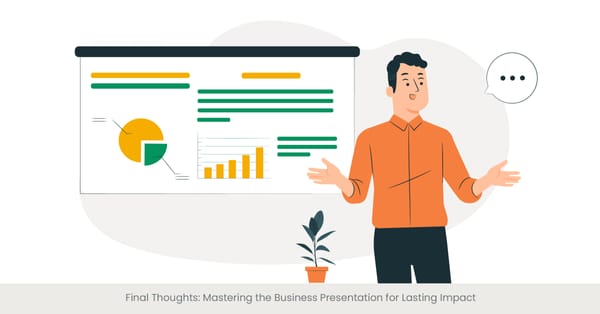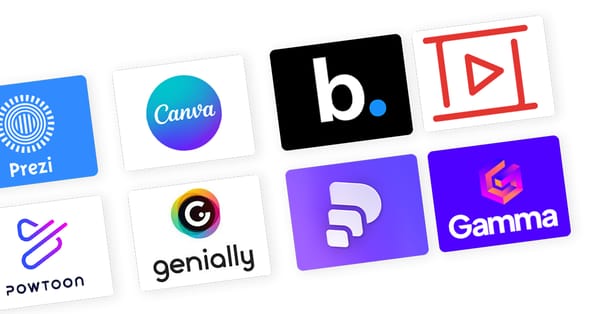
Strategies for Capturing Attention in the Opening Statement
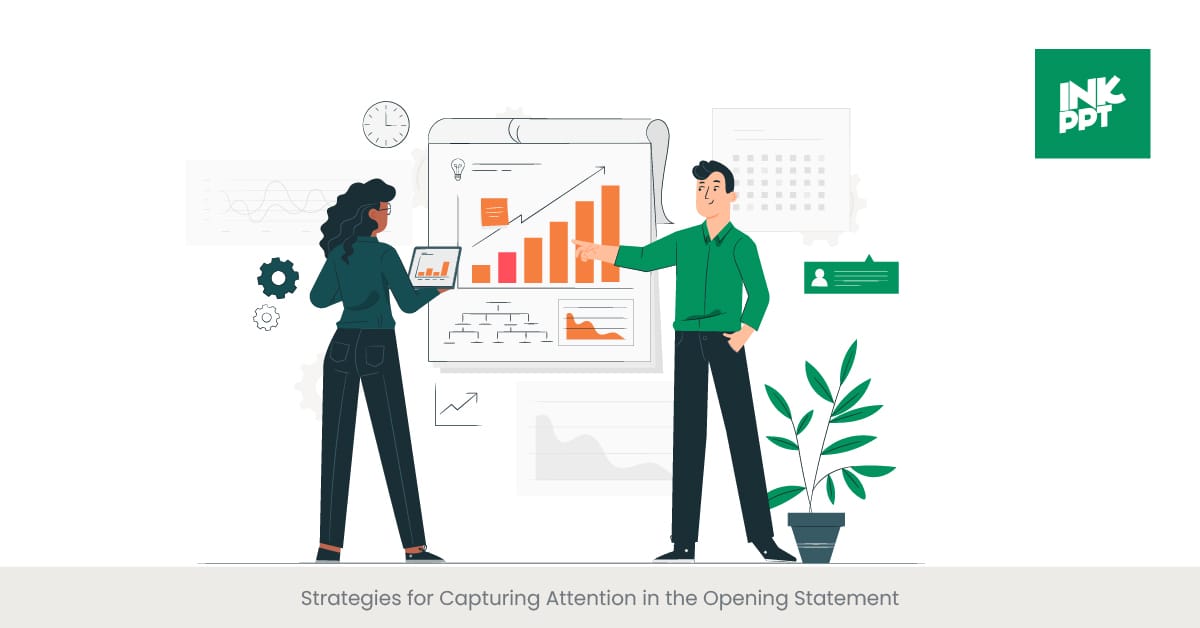
Engaging the Audience from the Start
The opening of your business presentation sets the tone and can significantly influence the audience's engagement level throughout the session. A compelling opening is crucial for capturing and retaining the audience's attention, making them eager to hear more. This involves not just what you say but how you say it. The first few minutes should clearly outline what the audience can expect and why it matters to them.
To craft an engaging start, consider using a surprising fact, a thought-provoking question, or a brief story that resonates with your audience's interests or challenges. This strategy not only piques curiosity but also establishes a connection between the presenter and the audience, laying the groundwork for a successful business model presentation.
Background and Importance
The technique of opening with impact is rooted in understanding the human brain's preference for storytelling and novelty. Historically, speakers who have managed to capture the audience's imagination from the beginning have enjoyed greater success in conveying their message.
This approach is supported by numerous studies that highlight the human brain' tendency to pay more attention to information that is immediately seen as relevant, beneficial, or intriguing. In the context of a business or company presentation however, this means presenting your business model or corporate presentation example in a fun and creative way that directly addresses the audience's needs, interests, or pain points.
Real-World Applications and Examples
Consider the launch of a groundbreaking product, where the CEO begins the presentation with a personal anecdote about the problem that led to the product's development, immediately drawing the audience into the narrative. This method has been effectively used in various contexts, from Steve Jobs unveiling the iPhone to small business owners pitching to potential investors.
For instance, a business slideshow example that starts with the entrepreneur's journey or a significant challenge overcome can transform a standard show, pitch deck or slide deck into an unforgettable story.
Supporting Data and Research
Research from the Harvard Business Review suggests that presentations that start with a compelling story or statistic can increase audience retention rates by up to 65%.
Further, a study published in the "Journal of Marketing" indicates that presentations beginning with a clear, audience-relevant problem statement can enhance the persuasive power of the pitch. Incorporating these elements into the opening of your business presentation not only grabs attention but also sets a strong foundation for the message you wish to convey.
Creating a Memorable Opening Quote or Anecdote
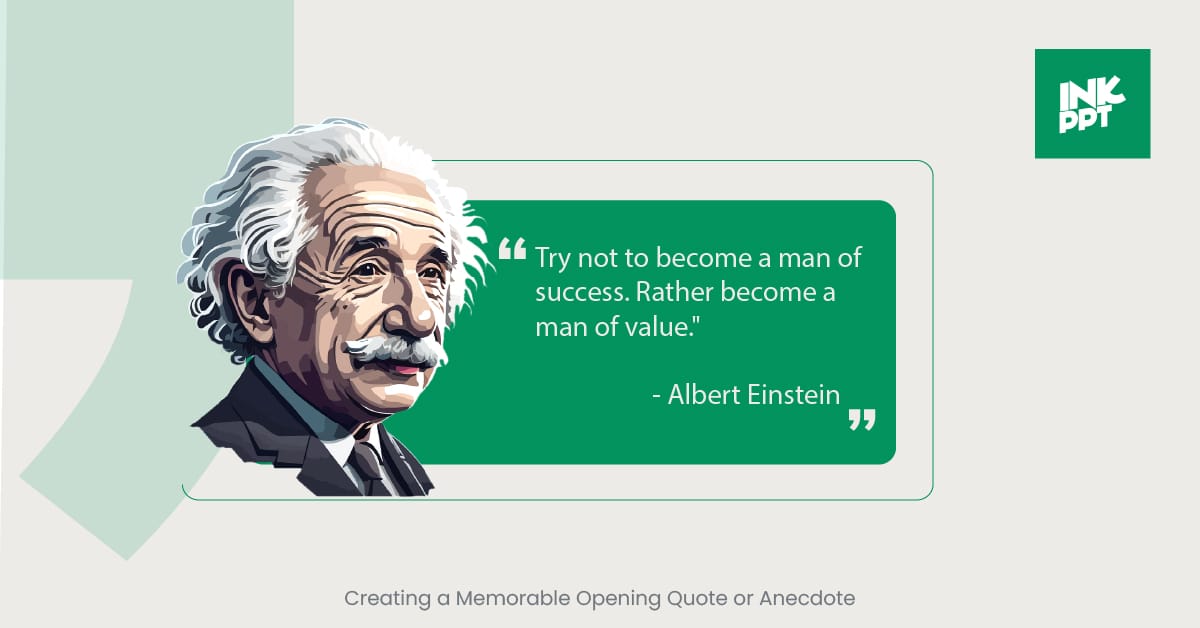
The Power of a Strong Start
Beginning your business presentation with a memorable quote or anecdote can be a transformative strategy. This approach does more than just capture attention; it makes your message stick. By selecting a quote or story that aligns with the core message of your presentation, you're not only engaging your audience but also framing their mindset to align with the upcoming content.
Whether it’s a powerful business model presentation or a detailed corporate presentation example, starting with an element that is both relatable and impactful can set the stage for a compelling narrative.
Understanding the Impact
The effectiveness of using a quote or anecdote lies in its ability to humanize the information being presented. This method taps into the emotional resonance of the audience, making complex business concepts more accessible and relatable. Historical examples show that some of the most successful presentations have utilized this technique to great effect.
For instance, using a quote from a renowned figure in your industry can lend credibility to company presentation and set a tone of inspiration. Similarly, an anecdote, especially one that reflects personal experience or common challenges, can create a sense of camaraderie and trust between the speaker and the audience.
Illustrating with Examples
Imagine a presentation on innovative business models that opens with Steve Jobs' famous quote, “Innovation distinguishes between a leader and a follower.” This not only captivates the audience but also immediately conveys the presentation's focus on innovation and leadership.
Another such business presentation example could be starting with a personal anecdote about a turning point or lesson learned in the business journey. Such stories are not only engaging but also provide a practical context for the theoretical concepts that follow, making the overall business presentation examples more relatable create engaging and impactful.
Research and Statistics
According to a study by the Association for Psychological Science, messages delivered as stories can be up to 22 times more memorable than just facts. Furthermore, incorporating quotes from influential figures can enhance the perceived authority of the presentation, as found in a publication by the Journal of Personality and Social Psychology.
These findings underscore the importance of carefully selecting an opening quote or anecdote that not only aligns with your presentation's theme but also has the potential to significantly impact your audience's engagement and retention.
Setting the Tone for the Presentation in the Opening
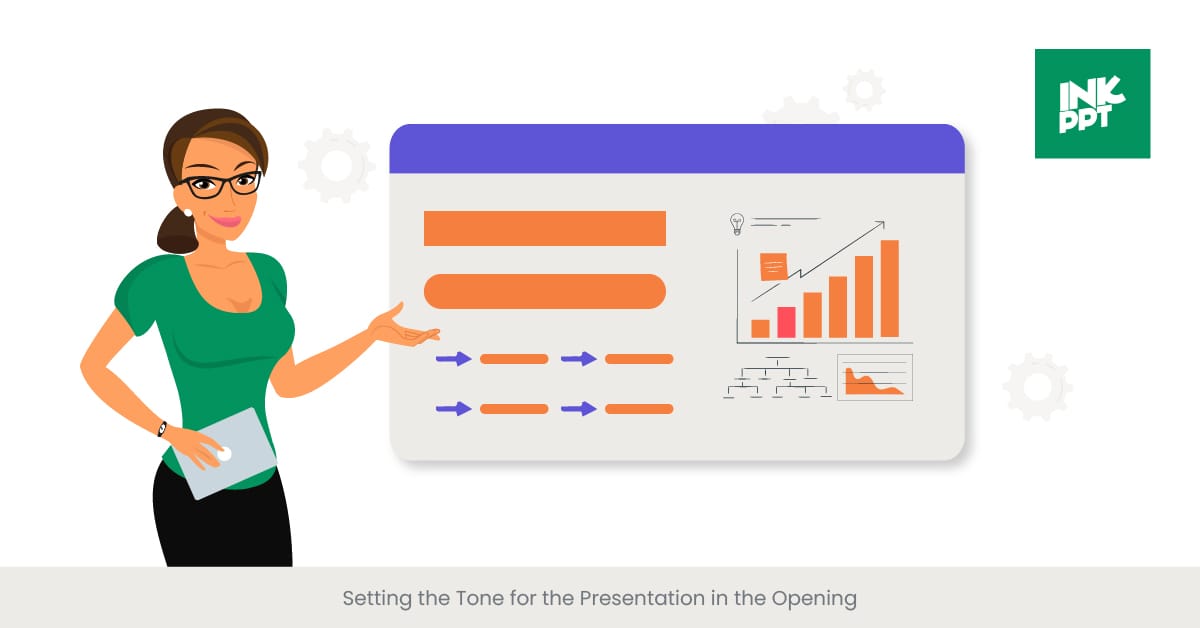
Establishing the Right Atmosphere from the Start
The initial moments of your presentation are critical for setting the tone and establishing the atmosphere for the entire session. This opening act is not just about grabbing attention but also about signaling to your audience what to expect in terms of content, style, and emotional engagement.
Whether your business presentation example aims to inspire, inform, persuade, or a combination of these, the tone you set at the beginning of next presentation should reflect the core message and the desired outcome of your presentation. For a business model or business presentation examples, this could mean creating an atmosphere of innovation and forward-thinking; for a corporate presentation example, it might involve establishing a tone that makes sense of the presentation design, professionalism and credibility for company presentation.
The Role of Tone in Audience Engagement
The tone of your presentation can significantly influence how your message is received and perceived by the audience. A well-chosen tone can make complex information more approachable, foster a positive environment, and build a rapport with the audience.
For instance, a conversational tone can make a business slideshow example feel more accessible and encourage audience interaction. On the other hand, a more formal tone might be appropriate for presentations dealing with technical or sensitive information, helping to convey seriousness and professionalism.
Real-World Application and Effectiveness
Consider a professional business presentation where the speaker begins with a light-hearted joke or anecdote related to the business challenge at hand. This approach not only breaks the ice but also makes the audience more receptive to the message that follows.
Alternatively, starting with a compelling fact or figure can set a tone of urgency and importance, priming the audience for a call to action. Successful business presentations often balance the tone throughout, ensuring it aligns with the presentation's purpose and the audience's expectations.
Supporting Evidence
Studies have shown that the emotional tone of a presentation can significantly affect audience engagement and retention. Research published in the "Journal of Business Communication" indicates that presentations that successfully match the tone to the audience's expectations and the presentation's objectives are more likely to achieve their goals.
This underscores the importance of carefully considering not just what you say in your opening but how you say it, ensuring it resonates with your intended message and audience.
Techniques for Smooth Transitions Between Presentation Sections
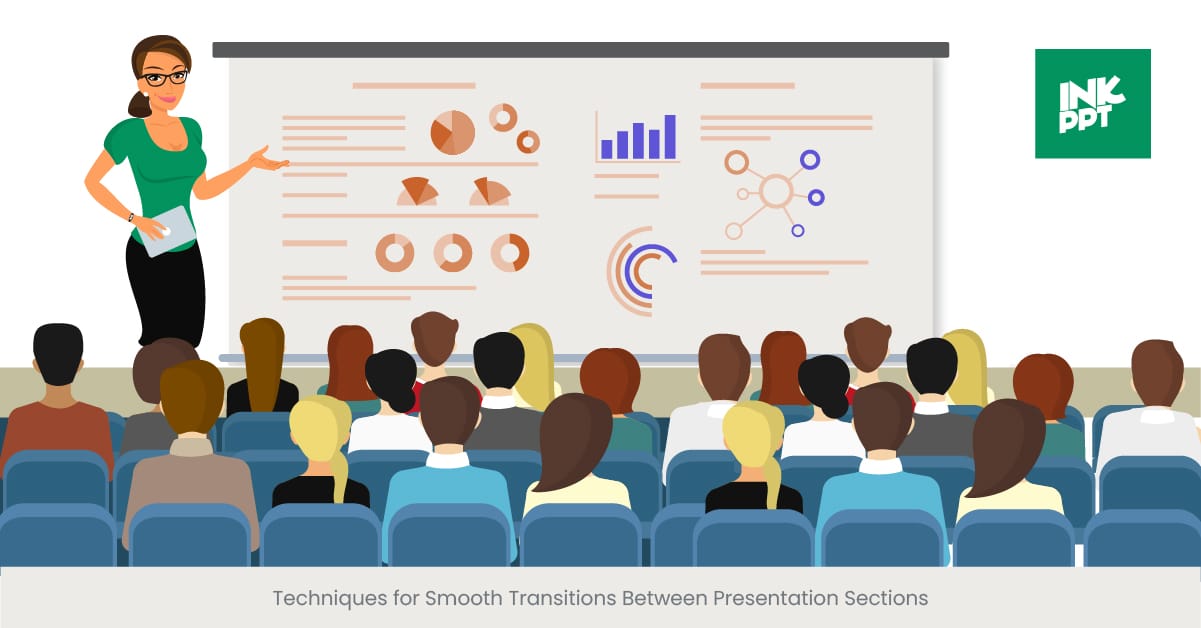
Ensuring a Seamless Flow in Your Presentation
Transitioning smoothly between sections of your presentation is essential for maintaining audience engagement and ensuring your message is coherent and impactful. Effective transitions act as bridges, connecting various parts of your presentation into a unified whole.
This is particularly important in a business model presentation, where the flow of information must be logical and seamless to convey complex ideas clearly. Techniques such as signposting, thematic links, and narrative threading can be employed to guide your audience through the presentation, making the progression of ideas feel natural and intuitive.
The Importance of Cohesive Storytelling
The art of transition is essentially about storytelling. Just as a good story flows naturally from one chapter to the next, a well-structured presentation moves smoothly between its sections, with each part building on the previous one. This requires careful planning and a clear understanding of the overall narrative arc of your presentation.
Whether it’s a corporate business presentation templates example or a more informal best business presentation examples example or slideshow of best of business presentation template examples, and video presentation templates examples, the transitions between sections should reinforce the other best business presentation examples part’s main themes and objectives, making the core message more memorable.
Examples of Effective Transition Strategies
One effective technique is the use of signposting language, such as "Having discussed our current market position, let’s now explore potential growth strategies." This not only signals a change in topic but also how the new section relates to the overall narrative.
Another strategy is to incorporate brief summaries at the end of each section, reinforcing key points and setting the stage for what’s to come. Additionally, visual aids like slide transitions or graphics can visually cue the audience to a change in focus, enhancing the flow and visual appeal of the presentation.
Research and Insights
Research in the field of communication and presentation skills highlights the significance of smooth transitions in enhancing understanding and retention. A study published in the "International Journal of Business Communication" found that presentations with clear, well-executed transitions are more likely to keep the audience engaged and facilitate a better grasp of the subject matter.
This underscores the need for presenters to devote time to planning their transitions as meticulously as they do their main content, ensuring that the presentation delivers its message effectively from beginning to end.
Summarizing Key Points and Takeaways in the Closing

Crafting a Memorable Conclusion
The closing of your presentation is as crucial as the opening. It’s your last chance to reinforce the main messages and ensure that your audience leaves with a clear understanding of the key points and takeaways. A well-crafted closing summary not only encapsulates the core aspects of your presentation but also emphasizes their relevance and application.
In the context of a business model presentation, this means succinctly revisiting the most compelling arguments, findings, or propositions you’ve presented, tying them back to your opening statements to create a full-circle moment.
The Role of Summarization in Audience Retention
Effective summarization techniques can significantly enhance audience retention. By distilling the presentation into a few memorable takeaways, you help the audience focus on what’s most important. This is not merely about repetition; it’s about consolidation and emphasis, making the complex information presented across various sections more accessible and memorable.
Whether it's a detailed corporate presentation example or a concise business slideshow examples, ending with a clear, strong summary helps cement the information in the audience's mind, increasing the likelihood they'll remember and act on it.
Real-World Summarization Strategies
An effective strategy for summarizing your presentation is to employ the “rule of three,” focusing on three key points that you want your audience to take away. This technique is rooted in the principle that information presented in threes is inherently more satisfying, memorable, and engaging.
Additionally, tying these points back to a compelling story or example shared at the beginning can enhance their impact. For instance, if you opened with a personal anecdote related to a business challenge, revisiting how the solutions presented can address such challenges reinforces the message and its relevance.
Supporting Evidence
Research underscores the effectiveness of strategic summarization in presentations. A study from the field of educational psychology suggests that presentations that conclude with a clear summary of key points lead to better comprehension and recall among the audience.
This is because the process of summarizing helps to reinforce the neural pathways associated with the learned information, making it more likely to be remembered. Additionally, incorporating a call to action in your closing can further enhance engagement, encouraging the audience to apply what they’ve learned in a practical context.
Crafting a Powerful Closing Statement or Call to Action
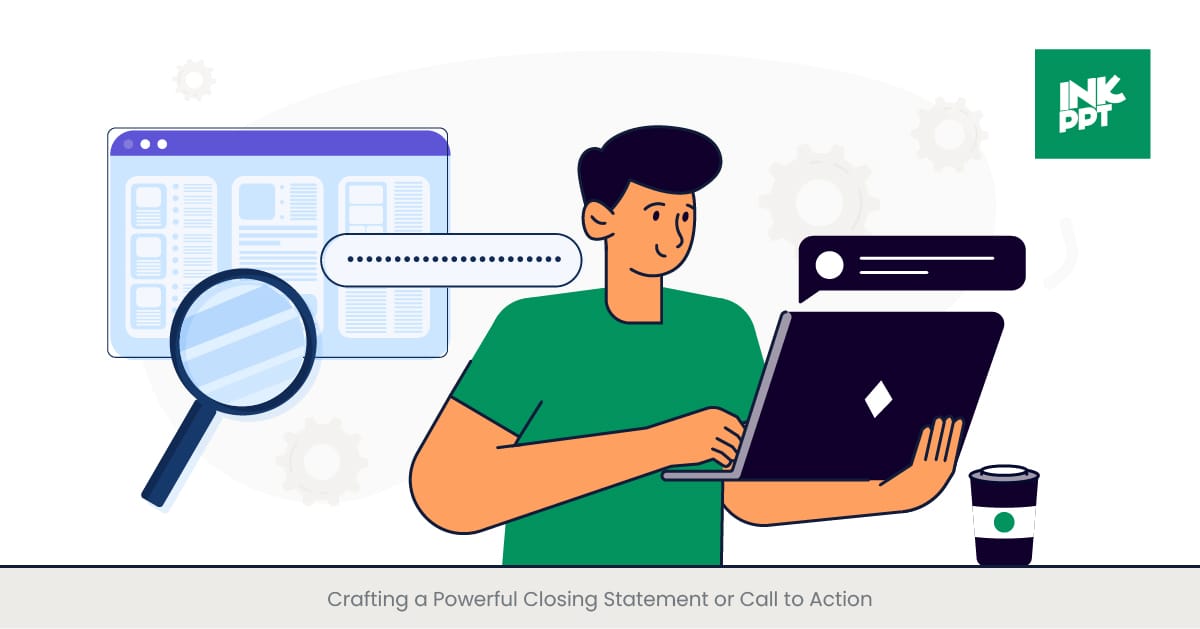
The Lasting Impact of a Strong Finish
A powerful closing statement or call to action (CTA) is essential for leaving a lasting impression on your audience and motivating them to take the desired action. This is your final opportunity to resonate with the audience, emphasizing the importance of your message and what you wish for them to do next.
Whether it’s adopting a new business model, considering your corporate presentation example as a template for success, or simply being inspired to change their approach to business, the closing statement should be clear, compelling, and memorable.
Principles Behind Effective Calls to Action
The effectiveness of a CTA lies in its clarity and its direct appeal to the audience's interests or needs. It should be seamlessly integrated with the content of your presentation, summarizing the key benefits or outcomes of taking the proposed action. For business presentation examples for instance, in a business model presentation, a CTA might encourage the audience to implement a particular strategy discussed during the session. The most effective CTAs are those that are specific, actionable, and imbued with a sense of urgency or importance, compelling the audience to act sooner rather than later.
Illustrating Through Real-World Examples
Consider the impact of a business presentation that concludes with a CTA urging the audience to start incorporating sustainability into their business strategies, supported by compelling evidence of its benefits presented throughout the talk.
Another great example could be a presentation on innovative marketing strategies ending with a CTA to adopt one new tactic in the next quarter. These specific, actionable CTAs help the audience visualize the next steps and the potential impact on their business or personal growth.
Research and Insights
Studies have shown that presentations ending with a strong CTA have a higher conversion rate, indicating that they are more likely to inspire action among the audience.
According to research published in the "Journal of Marketing," presentations that include a clear, compelling call to action can increase audience engagement and commitment to the proposed action by up to 70%. This highlights the critical role of the closing statement in not just summarizing the presentation but actively driving the audience towards a desired outcome.
Encouraging Audience Reflection in the Closing
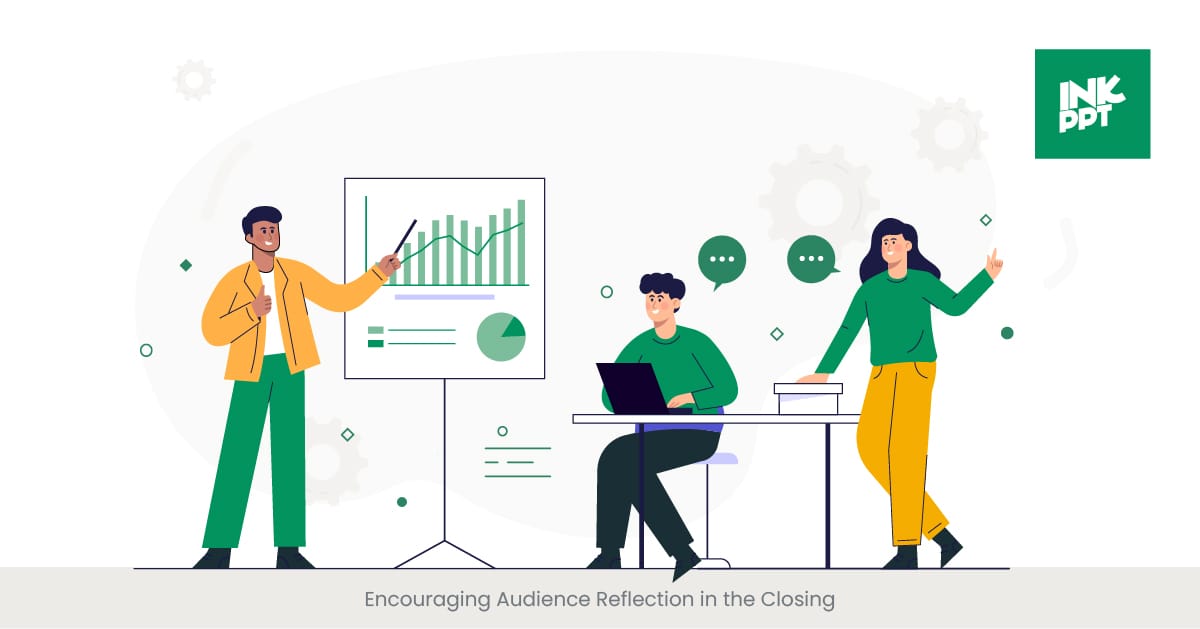
Fostering a Thoughtful Conclusion
Encouraging reflection in the closing moments of your presentation can profoundly affect your audience's engagement and retention of the material presented. By prompting your audience to think deeply about the topics discussed, you not only enhance the learning experience but also personalize it, making the information more relevant and impactful.
This approach can be particularly effective in business presentations, where the objective often includes not just the dissemination of information but also inspiring change or action. Reflective questions or statements can serve as a powerful tool for reinforcing key messages and encouraging personal or organizational reflection.
The Significance of Reflection
Reflection allows the audience to internalize the information, connect it with their existing knowledge or experiences, and consider its implications for their work or life. This process of contemplation can significantly enhance the effectiveness of your presentation, making it more likely that the audience will remember and act upon the information presented.
In the context of a serious business presentation design a model presentation or any professional business presentation, encouraging reflection can help solidify the audience's understanding of more complex topics, concepts or strategies, facilitating a deeper, more meaningful engagement with the content.
Examples of Encouraging Reflection
One effective way to encourage reflection is to end with a rhetorical question that prompts the audience to consider how the information presented applies to their own situations. For example, after a presentation on innovative business strategies, you might ask, "How could these approaches transform your business operations?"
Another method is to invite the audience to envision the future implications of adopting the strategies discussed, such as, "Imagine where your company could be in one year with these changes in place." These techniques not only encourage reflection but also personalize the presentation's content, making it more relevant and compelling for each audience member.
Supporting Research
Educational research underscores the value of reflective practices in enhancing learning and retention. A study in the "Journal of Educational Psychology" found that presentations incorporating elements that encourage audience reflection are more effective in fostering deep understanding and long-term retention of information.
This research suggests that by integrating reflective prompts into the closing of your presentation, you can significantly enhance the impact and memorability of your message, encouraging not just passive listening but active engagement and personal application of the concepts discussed.
Strategies for Ending on a Positive Note
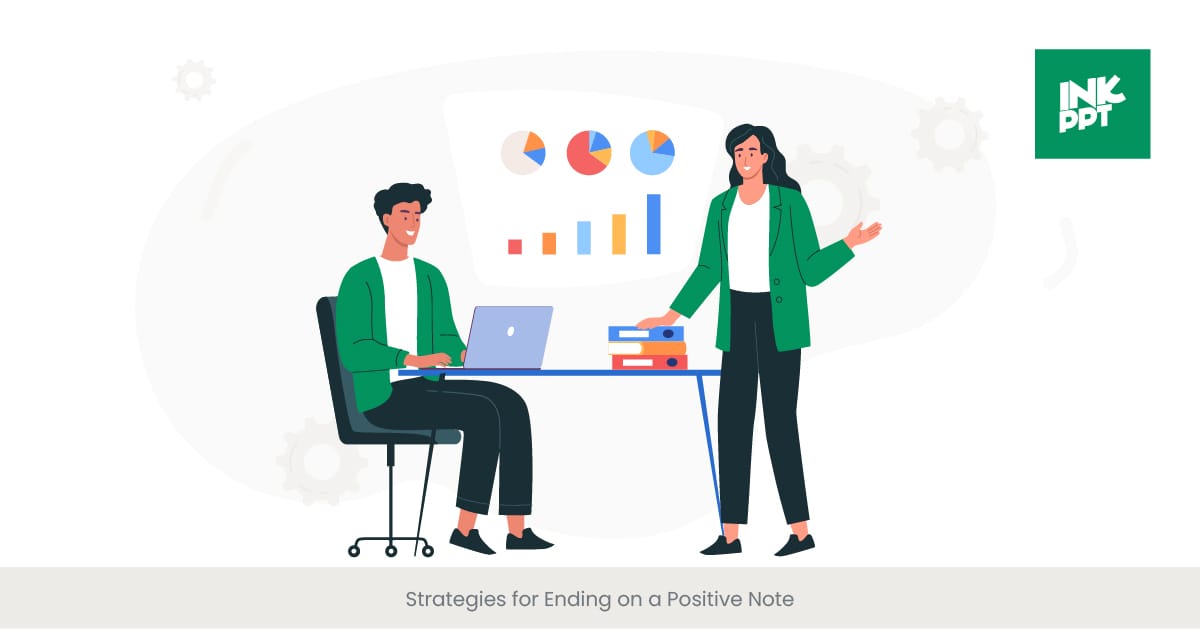
Leaving a Lasting, Optimistic Impression
Ending your business presentation on a positive note is crucial for leaving your audience feeling inspired, motivated, and ready to take action. A positive closing not only reinforces the key messages of your presentation but also ensures that your audience departs with a sense of possibility and enthusiasm.
This strategy is particularly effective in business contexts, where the ultimate goal is often to inspire change, foster innovation, or encourage commitment to new strategies. By concluding with an uplifting message, you can enhance the memorability of your presentation and strengthen your connection with the audience.
The Power of Positivity
The psychology behind ending on a positive note is based on the principle that people are more likely to remember and act upon information that evokes positive emotions. Positive endings can help mitigate any resistance to change by framing the proposed actions or strategies in an optimistic light.
For business model presentations or corporate presentation examples, highlighting the potential benefits and successes that can result from the discussed strategies can leave the audience feeling hopeful and engaged.
Implementing Positive Closing Strategies
A practical approach to achieving a positive ending is to share success stories or case studies that illustrate the positive outcomes of adopting the strategies or ideas you've presented. This could involve showcasing the achievements of other businesses or individuals who have successfully implemented similar strategies.
Additionally, offering actionable tips or steps that the audience can take immediately can empower them to act, reinforcing the presentation's positive message. For example, concluding a presentation on productivity techniques with a simple, effective action plan for the audience to try in their own workplaces can leave a lasting, positive impression.
Evidence Supporting Positive Conclusions
Research in the fields of psychology and business communication suggests that presentations ending on a positive note are more likely to be evaluated favorably by audiences. A study published in the "Journal of Applied Psychology" found that presentations that conclude with positive, affirming messages tend to increase audience satisfaction and perceived effectiveness of the presentation.
This indicates that strategically crafting your presentation's closing to highlight positive aspects and future possibilities can significantly impact your audience's response and the overall success of your presentation.
Maintaining Engagement until the Last Slide
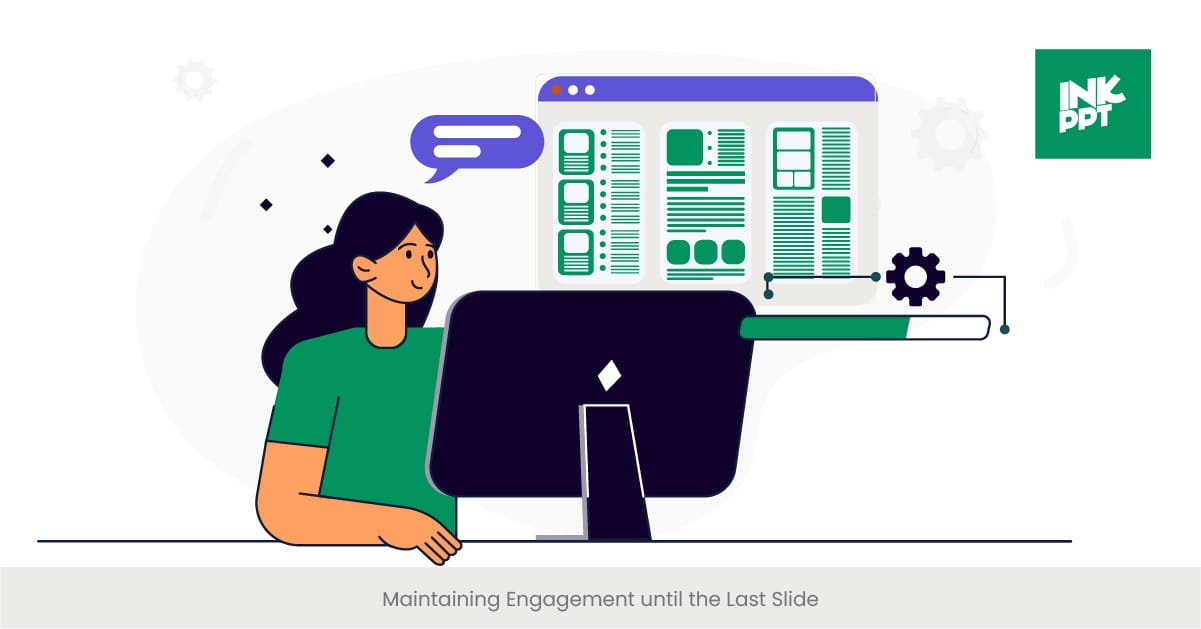
Sustaining Audience Interest Through to the Conclusion
Keeping your audience engaged until the very end of your presentation is essential for ensuring that your message is fully received and retained. This can be challenging, especially in longer presentations, but various strategies can be employed to maintain interest and interaction from the first to the last slide.
These techniques are particularly crucial in a business setting, where the effectiveness of your presentation can significantly influence decision-making, investment, or adoption of new strategies. Ensuring continuous engagement helps in reinforcing your key messages and maximizing the impact of your closing remarks.
Strategies for Continuous Engagement
Interactive elements are key to sustaining audience interest. This can include Q&A sessions strategically placed before the conclusion, live polls, or interactive demonstrations relevant to the content being presented. Utilizing storytelling techniques throughout the presentation can also keep the audience invested in the outcome.
Furthermore, varying the delivery style, such as alternating between speaking, showing video clips, or using other multimedia elements, can help keep the presentation dynamic and prevent audience fatigue. For business model presentations or professional business presentations, incorporating real-time examples or testimonials can also add a layer of engagement and credibility.
Real-World Examples of Engagement
Consider the impact of a business presentation that introduces an interactive Q&A segment right before the final summary, allowing the audience to engage directly with the content. Another example could be incorporating a short, relevant video testimonial from a satisfied customer or partner, which can refresh the audience's attention and reinforce the presentation's messages through varied content delivery.
Supporting Research
Research in educational psychology indicates that audience engagement tends to decrease over time unless actively maintained through interactive or varied content delivery methods. A study published in the "Journal of Business and Technical Communication" suggests that presentations incorporating multimedia elements and audience participation activities report higher levels of engagement and information retention.
This underscores the importance of planning for engagement throughout the presentation, ensuring that your audience remains attentive and invested until the final slide.
Practicing Consistency in Opening and Closing Across Presentations
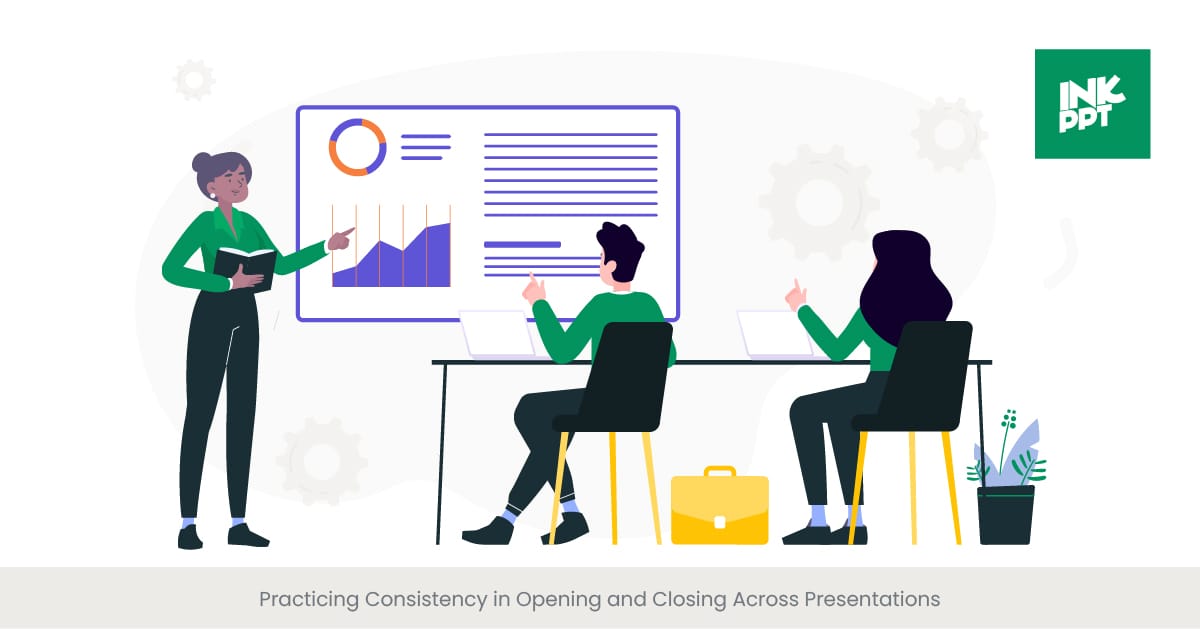
Establishing a Signature Presentation Style
Consistency in the opening and closing of your presentations is key to establishing a recognizable and effective presentation style. This doesn't mean that every presentation should start and end exactly the same way, but rather that they should reflect a consistent quality, tone, and approach that aligns with your personal or brand identity.
For business professionals, this consistency helps in building credibility and trust with your audience, whether you're delivering a business model, using your business Powerpoint presentation examples in presentations or presentation examples, sharing corporate presentation examples, or showcasing your own business Powerpoint presentations or presentation examples in presentations, presentation examples or slideshow examples. It ensures that regardless of the topic, your business Powerpoint presentations themselves are immediately identifiable and resonate with your audience.
The Importance of a Consistent Approach
A consistent approach in your presentations can enhance audience recall and engagement over time. When your audience knows what to expect in terms of quality and delivery, they're more likely to be receptive to your message.
Consistency also aids in reinforcing your key messages across different presentations, as the familiar structure and style make it easier for your audience to connect the dots and understand the broader narrative of your business or professional journey.
Implementing Consistent Elements
To achieve consistency, consider using a uniform template or design for your slide decks, maintaining a similar pacing and structure in your presentations, and developing a set of opening and closing remarks that align with your core messages.
For instance, you might start every presentation with a brief story that highlights a key challenge or opportunity in your field, and end with a motivational quote or call to action that encourages reflection or action. These consistent elements can become a hallmark of your presentation style, making your messages more memorable and impactful.
Evidence of Effectiveness
Research in the field of communication and marketing has shown that consistency in messaging and branding significantly increases message retention and brand recall. A study in the "Journal of Advertising Research" suggests that audiences are more likely to remember and act upon messages delivered in a consistent manner across different platforms and formats.
Applying this principle to your own presentations, it becomes clear that a consistent opening and closing style can enhance the overall effectiveness of your communication efforts, leaving a lasting impression on your audience.
FAQs
What is a business model presentation?
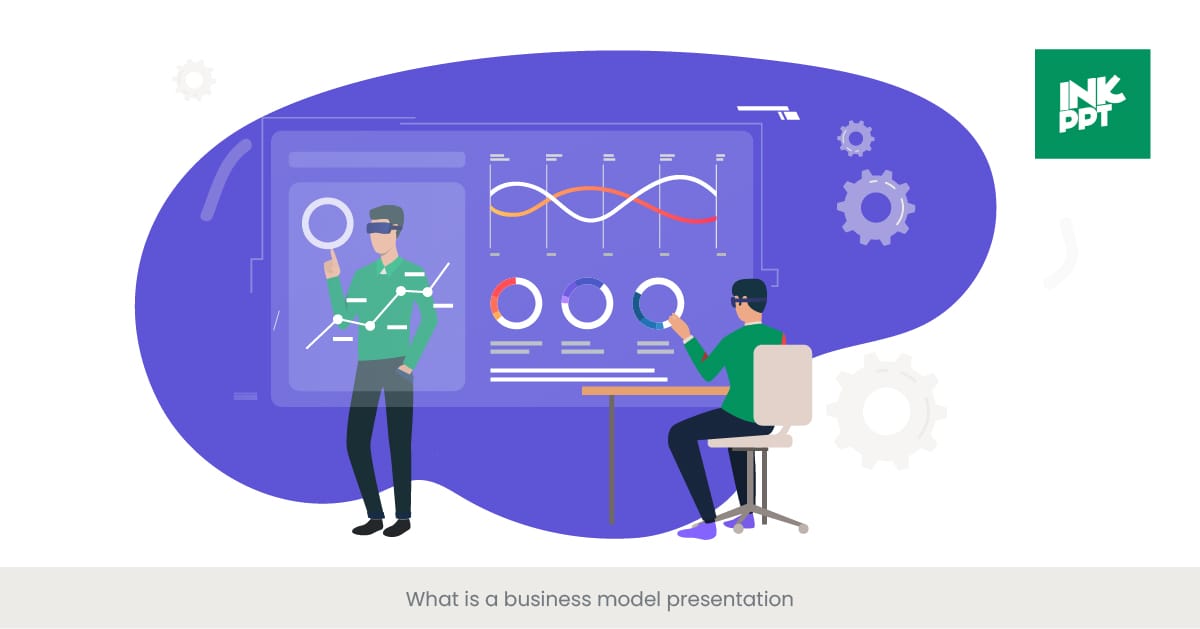
A business model presentation outlines a company's strategy for operating and generating revenue. It details the products or services the company offers, its target market, and its unique value proposition.
This type of presentation is crucial for attracting investors, partners, and other, potential partners, potential clients, and potential customers by clearly demonstrating how the the business plans and intends to achieve success.
How do you present a business model in slides?
Presenting a business model in slides involves summarizing the key components of your business strategy in a clear, concise manner. Start by defining your value proposition, then outline your target market, revenue streams, and key resources.
Use visual aids and slide designs and data visualizations like charts and diagrams to illustrate complex concepts, and ensure each slide focuses on one main idea to keep your audience engaged.
What should a business presentation include?
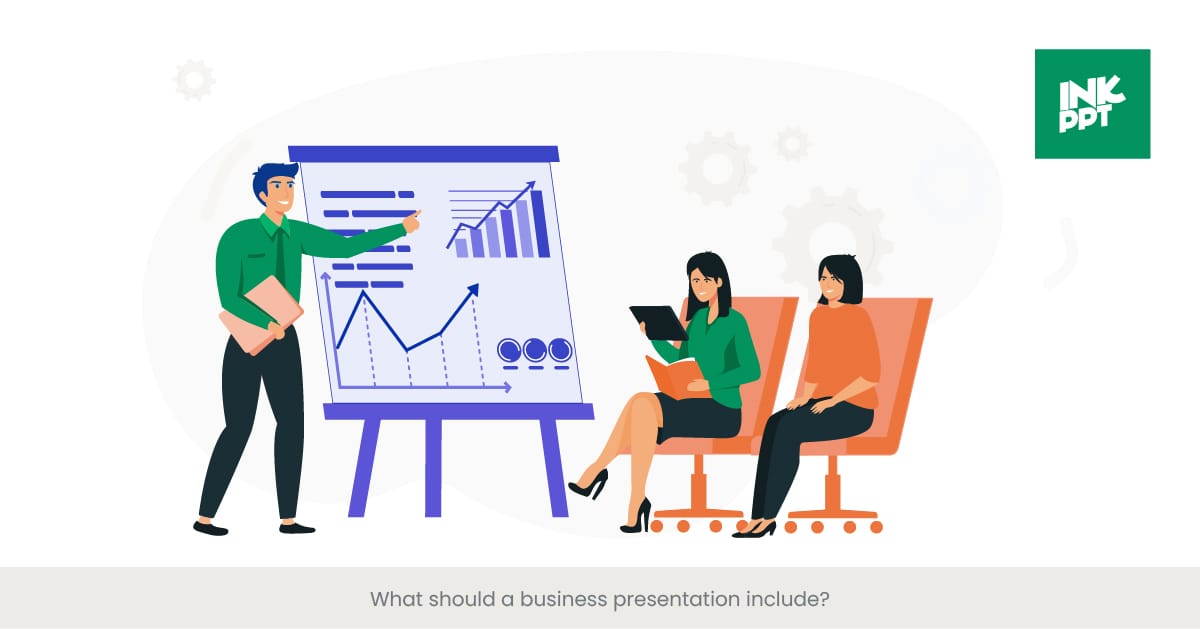
A business presentation should include an introduction that captures the audience's attention, an overview of the business model or proposal, detailed analysis of the market and competition, evidence of the business's potential for success, and a compelling conclusion with a call to action. Visual aids, such as charts, graphs, and videos, can enhance understanding and engagement.
How do you write a business plan presentation?
Writing a business plan presentation requires distilling your comprehensive business plan into key points that can be communicated effectively in a presentation format.
Highlight the problem your business solves, your solution, market analysis, business model, team, and financial projections. Use clear, persuasive language and visuals to support your points.
What should a corporate presentation include?
A corporate presentation should include an overview of the company's history, mission, and values; a summary of products or services; an analysis of market position and competition; recent achievements or case studies; and future goals or strategic initiatives. It's also important to tailor the presentation software content to the audience, whether they are investors, customers, or employees.
How do you do a corporate presentation?
Doing a corporate presentation effectively involves clear structuring, practicing your delivery, and using professional visuals. Start with a strong opening to grab attention, structure your content logically, and end with a powerful closing that reinforces your key message.
Use visual aids to create, highlight important points, create, and engage with your audience through questions or interactive elements.
What is a corporation presentation?
A corporation presentation is a detailed and comprehensive overview of a company's activities, strategies, and achievements, designed to inform or persuade stakeholders, including investors, customers, and employees.
It typically covers the company's mission, market positioning, financial health, strategic initiatives, and success stories.
What is business presentation with example?
A business presentation is a formal event where a company's products, services, or strategies are showcased to an audience.
For a pitch deck for example, a startup might give a presentation to potential investors detailing its business model, market potential, and financial forecasts, using slides to highlight key points and persuade investors of its value proposition.
What should be included in a business slideshow?
A business slideshow should include an engaging introduction, an overview of the business or project, detailed sections on market analysis, strategy, implementation plans, financial projections, and a compelling conclusion.
Each a slide deck or presentation template or pitch deck should convey a single key point problem statement or idea, supported by visuals and minimal text for clarity.
How do you make a good business slideshow?
To make a good business slideshow, start with a clear structure and a compelling narrative. Use high-quality visuals and keep text to a minimum to ensure slides are not overcrowded.
Incorporate enough of data points, bullet points and evidence to support your arguments, and rehearse your delivery to ensure a smooth, confident presentation. Engage your audience with interactive elements or questions to keep them interested throughout professional presentation.
What is the 5 5 5 rule for slideshows?
The 5 5 5 rule for slideshows suggests having no more than 5 words per line of text, 5 lines of text per slide, and 5 text-heavy slides in a row.
This rule aims to keep slides visually appealing and easy to read, enhancing audience engagement and information retention.
What is the 10 20 30 rule for slideshows?
The 10 20 30 rule, proposed by Guy Kawasaki, suggests that a presentation should have 10 slides, last no longer than 20 minutes, and use a minimum font size of 30 points.
This rule is designed to keep video presentations more concise, focused, and readable, even for audience members sitting at the back of the room.
How do you write a business presentation example?
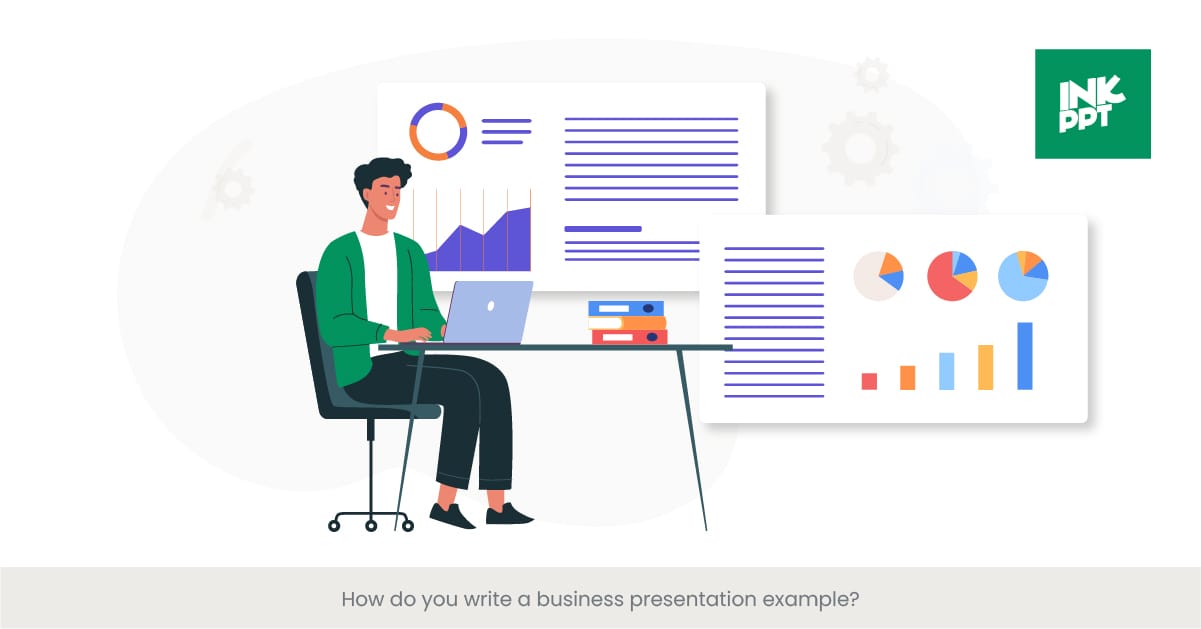
Writing a business presentation example involves outlining a clear objective, identifying the key message or takeaway, and structuring your content to guide the audience through your argument or proposal.
Use specific examples to illustrate your points, and include visuals like charts stock photos and graphs to support your narrative.
How do you present a business sample?
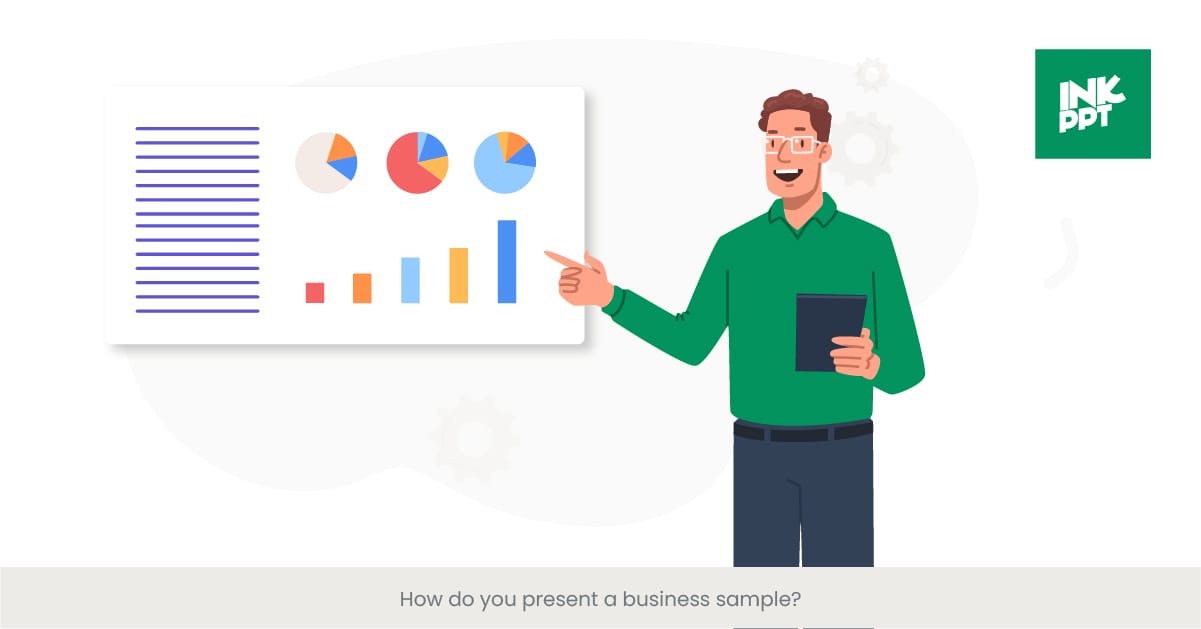
Presenting a business sample, such as a product, service, or business plan, involves demonstrating its value and relevance to your audience.
Begin with an introduction that highlights the problem or need your sample addresses, provide a detailed overview of the sample, explain more detail its benefits, and conclude blog post with a call to action or next steps.
What is a business presentation format?
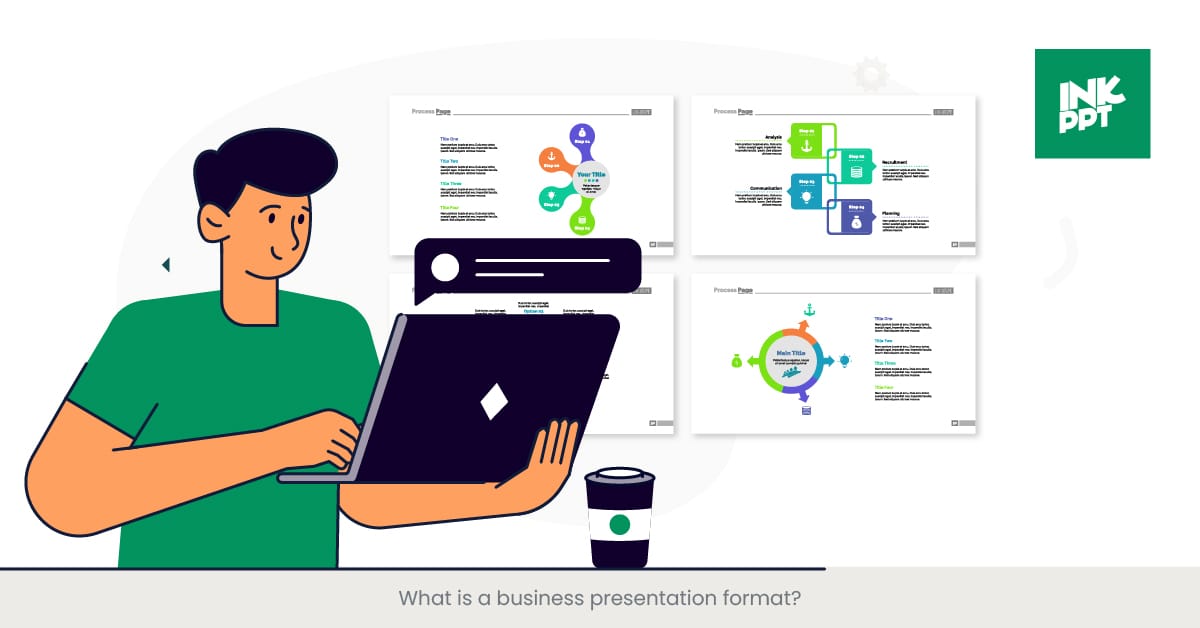
A business presentation format typically includes an introduction, an overview of the topic or proposal, detailed content sections, and a conclusion with a call to action.
It may also include an agenda, executive summary, and appendices. The format should be professional and structured to facilitate clear communication of your message.
How do you deliver a presentation at work?
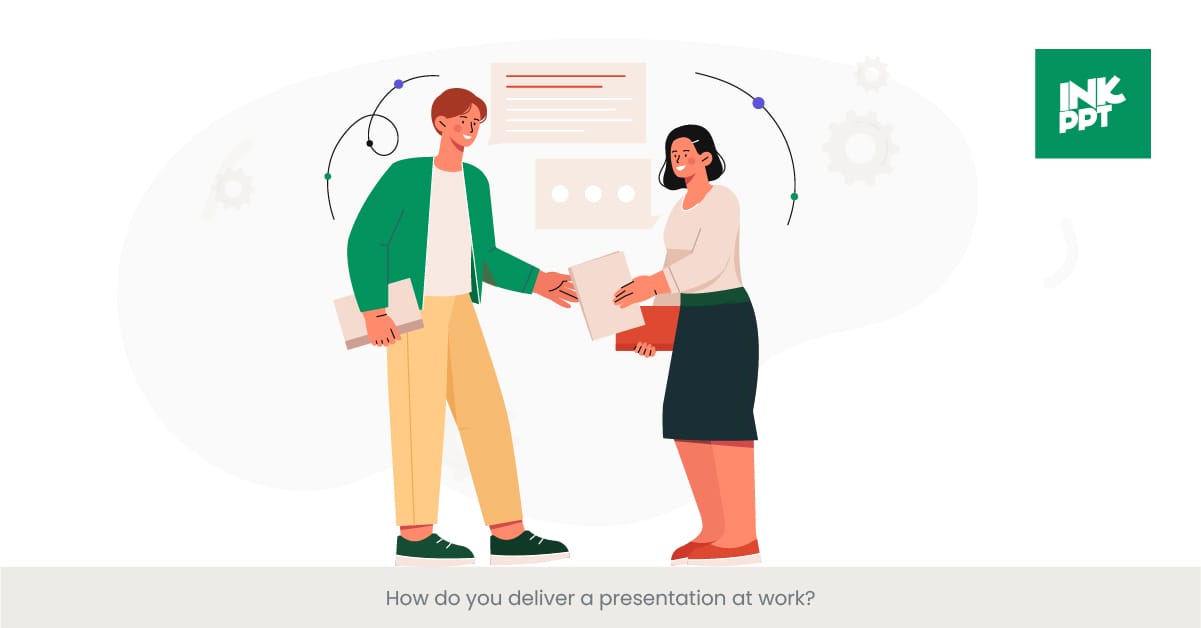
Delivering a presentation at work effectively requires preparation, practice, and engagement with your audience. Know your material thoroughly, anticipate questions, and use visual aids to enhance your message. Speak clearly and confidently, maintain eye contact, and be responsive to audience feedback or questions.
What are the 5 rules needed for presenting a presentation?
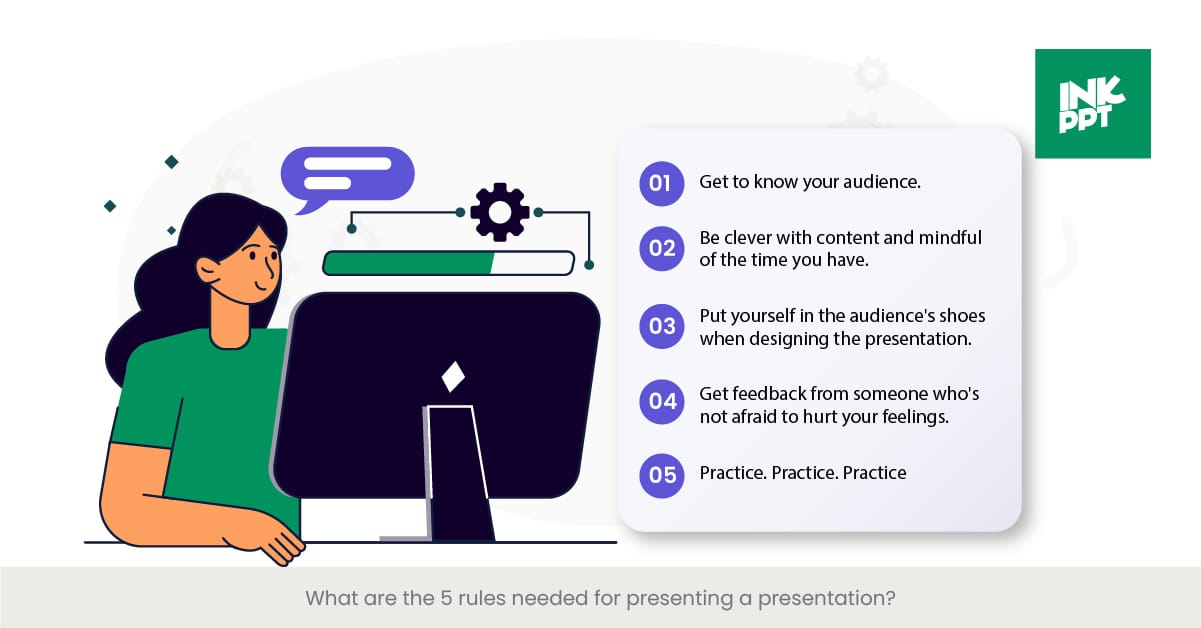
- Know your audience and tailor your content to their needs.
- Structure your presentation logically, with a clear beginning, middle, and end.
- Use visuals and stories to enhance understanding and engagement.
- Practice your delivery to ensure clarity and confidence.
- Engage with your audience, encouraging questions and feedback.
How do you give a good work presentation?
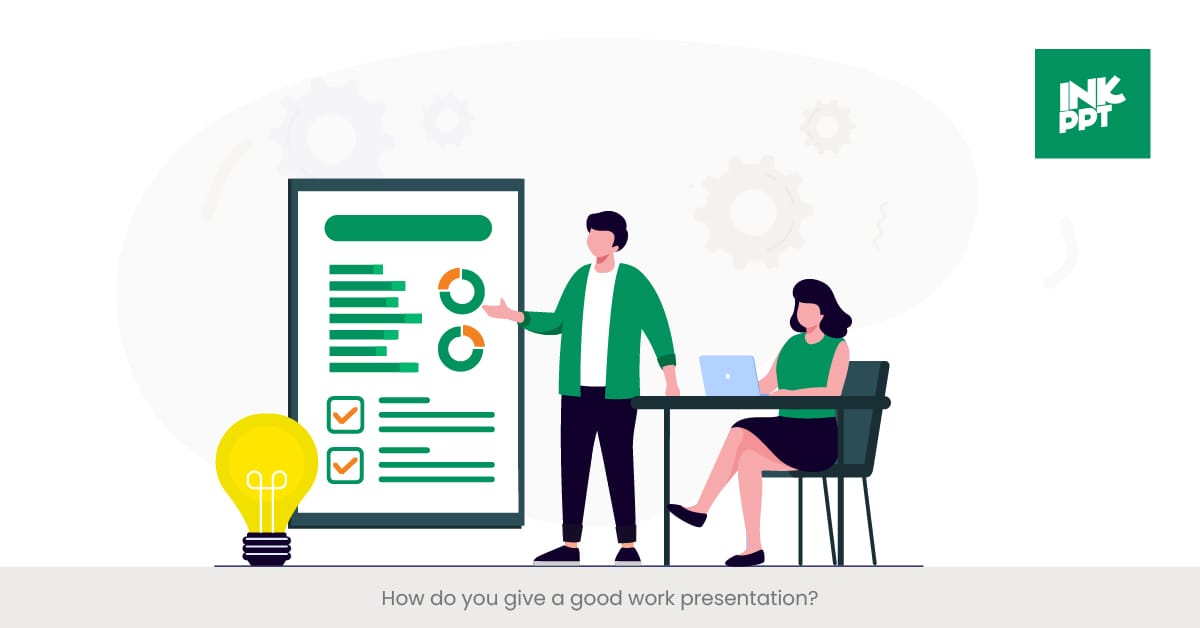
Giving a good work presentation involves thorough preparation, understanding your audience, structuring your content for clarity, practicing your delivery, and using visuals effectively.
Be concise, focus on key messages, and interact with your audience to maintain engagement and ensure your presentation is impactful.
How do you not get nervous when giving a presentation?
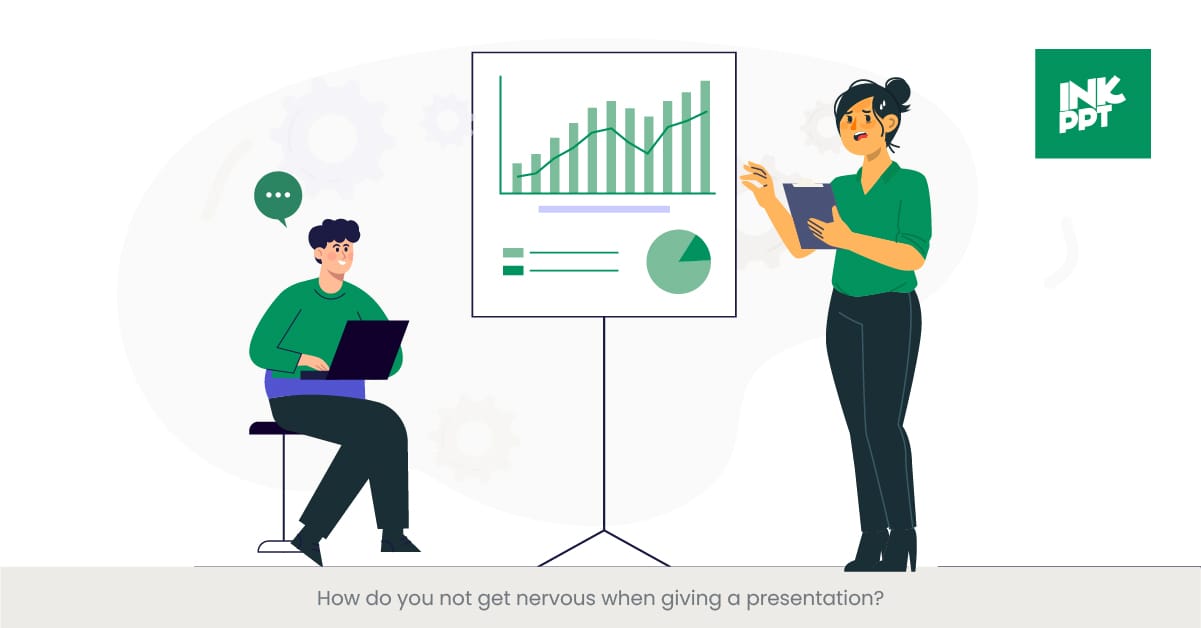
To reduce nervousness when giving a presentation, practice your material thoroughly, familiarize yourself with the venue and equipment, visualize success, use deep breathing techniques to calm nerves, and focus on connecting with your audience rather than on yourself.

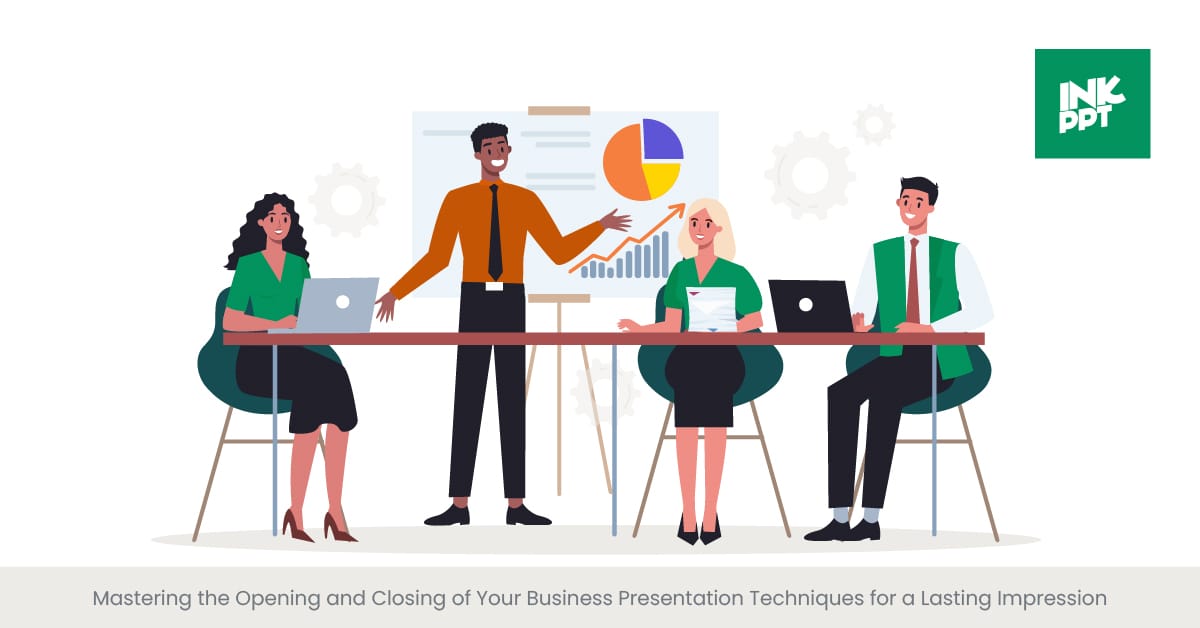

%20(1).jpg)
%20(1).jpg)
